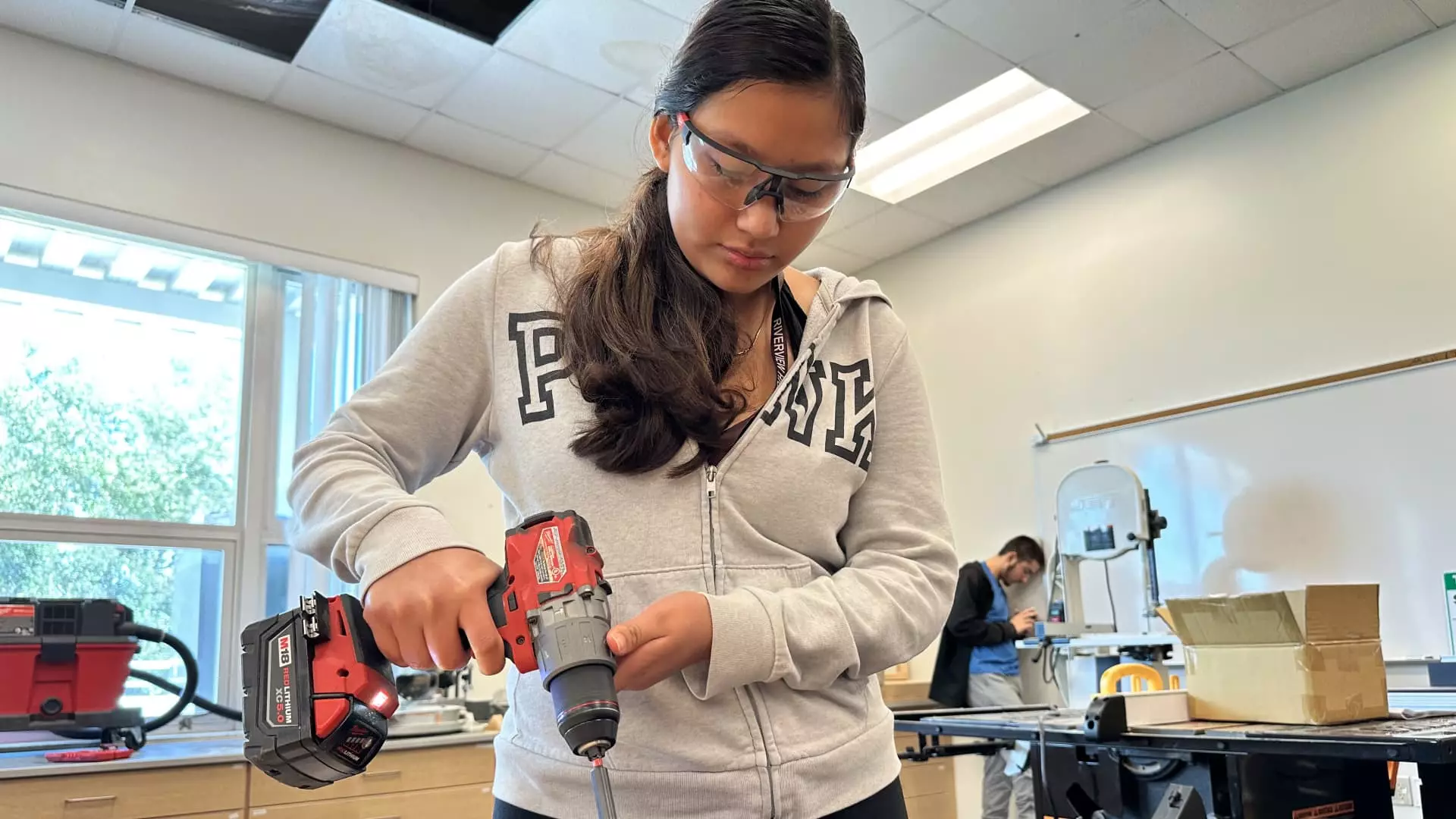In recent years, a noticeable cultural shift has been emerging, particularly among the youth regarding education and career choices. This transition reflects a growing skepticism towards traditional four-year degrees, as young people increasingly recognize the merit of vocational training and hands-on experience. The experience of students like Angela Ramirez-Riojas, an 18-year-old from Riverview, Florida, exemplifies this trend. For Ramirez-Riojas, following in her grandfather’s footsteps in construction poised more intrigue than pursuing a college degree, which she views as a backup plan. Her story is emblematic of a larger phenomenon sweeping through the younger demographics, marking the rise of skilled trades as a viable and attractive career path.
As vocational training programs gain prominence, the discussion surrounding educational alternatives is intensifying. Students who once felt pressured to adhere to the conventional trajectory of pursuing a four-year college education are now looking at options with a practical application in the workforce. Ramirez-Riojas’s enthusiastic involvement in her high school’s newly established construction program underscores her pursuit of immediate, hands-on job training, which is becoming increasingly appealing to many in her cohort.
The introduction of vocational programs, particularly in high schools like Riverview High, is more than just a response to changing career aspirations; it’s crucial for addressing the pressing skills gap plaguing the construction industry. Erin Haughey, the principal of Riverview High School, underscores that programs such as the construction academy are aimed at cultivating motivated students who yearn to learn a trade, thereby providing them pathways to stable employment without the burdensome debt often associated with college education.
With rigorous demand for skilled labor—compounded by an aging workforce—the construction sector is facing a labor shortage that requires immediate solutions. Riverview’s construction academy was specifically launched to create a well-trained workforce, with financial backing from local builders indicating community support for such initiatives. The program not only facilitates job readiness but also helps to fill critical employment gaps created by retirements in the industry.
Financial analysts and educators are increasingly recognizing the advantages of vocational training over traditional educational pathways. For instance, the compensation rates for new construction hires are ephemeral indicators of this shift, revealing that median earnings for construction roles are competitive—often surpassing those in the professional services sector. Indeed, as reported, the average annual salary for new construction hires reached approximately $48,000, reflecting a growing acknowledgment of the economic viability afforded by skilled trade roles.
Moreover, survey data indicate a significant transformation in how high school students perceive their educational futures. A growing number express that a high school diploma or vocational qualification may suffice for their career aspirations. In an era where real-world experience and skill application seem to hold more weight, the younger generation is reassessing the societal perception that equates a four-year degree with success. Many students, including nearly half of survey respondents, acknowledge that practical job training can be more beneficial than obtaining an academic degree.
Framing this shift, financial planner Ted Jenkin stresses that the assumption of a four-year college degree as the epitome of success is outdated. Together with the financial burdens associated with higher education and the desire for immediate career opportunities, young adults are increasingly gravitating towards skilled trades. This phenomenon has given birth to what some are calling the “toolbelt generation”—an embodiment of youth who are eager to equip themselves with practical skills that offer substantial returns in today’s economy.
The statistics further bolster this notion; according to the National Student Clearinghouse, enrollment in vocational programs surged by 16% from 2022 to 2023. Students are recognizing that securing a good job often relies less on the prestige of one’s educational background and more on the applicable skill set acquired through vocational training. These paths not only provide job security but also promise a respectable income, thereby reshaping the traditional economic narratives that surrounded graduate employment.
Looking ahead, the landscape of education and career preparation is poised for transformation as students increasingly reject the convention of college as the sole route to success. By championing alternatives that emphasize skill-building and practical experience, society stands to benefit from a more diverse array of career paths that include rewarding opportunities in skilled trades. As individuals like Angela Ramirez-Riojas exemplify, the next generation is defining success on their own terms—equipped with tools in hand and determination in heart. The pathway to a fulfilling career, it seems, may very well lie in vocational education and industry engagement.


Leave a Reply